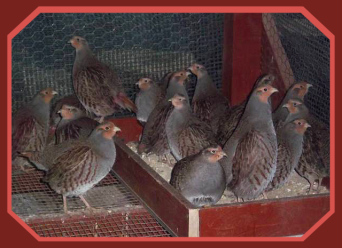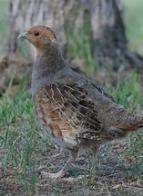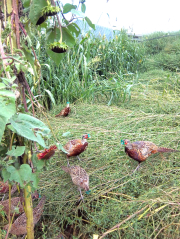
Our Hungarian Partridges are raised from eggs that were laid by adults that came directly from Europe. These birds are much more hardy than most because inbreeding is never a factor. We get them started on a wire bottom pen to prevent any illnesses they can acquire through the bottom of their feet. Both Chukar and Hungarian Partridges can be susceptible to disease this way. Being on wire helps keep them cleaner and dryer. Then we get them outside as soon as possible so they will be ready for release when you pick them up.
LIMITED QUANTITY! ORDER YOURS NOW! We are booking up
fast!
European Partridge Genetics - Strong and
Healthy!
Juveniles available mid-September (ready for
release)
Please call for best pricing
507-647-3928
AT INDIAN LAKE GAME BIRDS (WINTHROP MN) WE SPECIALIZE IN JUVENILE HUNGARIAN PARTRIDGE FOR RELEASE / RESTORATION. Part of our mission is for private land owners to have Huns back on their land where they once were.



